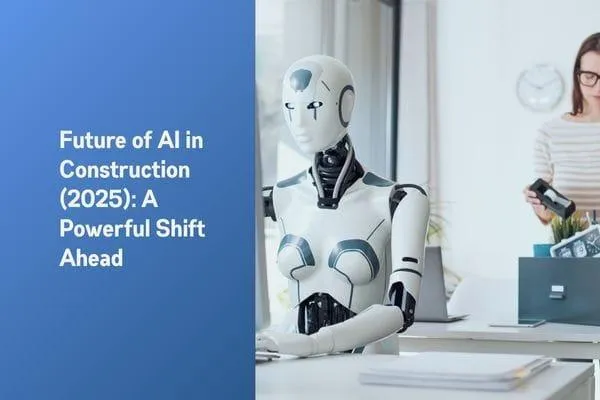
Future Of AI In Construction (2025): A Powerful Shift Ahead
The future of AI in construction is closer than most people think. Job sites may still be full of cranes, steel, and dust, but the real changes are happening behind the screens. AI tools are stepping in to help teams plan better, cut delays, keep workers safer, and make projects more precise than ever.
Don't think this shift is replacing people, it's giving them smarter ways to work. You heard that right. As AI keeps advancing, it’s starting to guide decisions that save time, reduce waste, and improve results across every stage of a build.
In this read, you’ll look at how the future of AI in construction is shaping up, the new tools transforming the field, and what forward-thinking companies are doing to stay ahead. If you’re in construction, now’s the moment to see where these innovations fit into your next project.
Future Of AI In Construction (2025): A Powerful Shift Ahead
What is the Future of AI in Construction?
How AI Is Already Reshaping Construction Sites
1. Predictive Planning & Estimating
2. Smarter Project Management Tools
3. AI-Driven Safety & Risk Monitoring
4. Robotics, Drones & Automated Machinery
Will Construction Jobs Be Replaced by AI?
Global Case Studies: How AI Is Changing Real Projects
1. Bridge Monitoring with Digital Twins and Sensors
2. AI in Construction Scheduling: ALICE Technologies
3. Drone + AI for Waste Management in Dubai
4. SmartEnds Vision AI in Waste Recycling for Construction
Beyond Numbers: How AI Affects Real Workers
What is the Future of AI in Construction?
Before we jump into use cases and predictions, let’s pause: What do we really mean by the future of AI in construction?
In simple terms, tools and systems that think, learn, and help make decisions faster and smarter on jobsites, in offices, and across the whole building lifecycle. It’s a software that studies the data from your projects, notices warning signs early, and suggests practical steps to keep things on track.
Already today, AI is being used to predict delays, optimize on-site labor, and catch design clashes. For example, about 56% of investors in construction say they’ll increase AI funding in 2025 compared to the last year, showing they believe it’s not a fad.
Meanwhile, nearly 45% of firms report they have not yet used AI in operations, so there’s a big gap between belief and use. Over time, AI will shift from “cool tool” to “essential partner” in every building project. That’s the future we’re walking toward.
How AI Is Already Reshaping Construction Sites

1. Predictive Planning & Estimating
AI can analyze historical data from past projects and predict timelines, budgets, and material needs. This is often called AI in construction estimating, and it prevents overspending or shortages on materials. Contractors can see potential bottlenecks before work even begins.
2. Smarter Project Management Tools
Modern AI-powered project management tools track tasks, teams, and deadlines in real time. With artificial intelligence in construction project management, managers get alerts for potential delays and can reassign tasks automatically, saving both time and money.
3. AI-Driven Safety & Risk Monitoring
Safety is a huge concern on construction sites. AI tools monitor workers, equipment, and environmental conditions to prevent accidents. For example, sensors and cameras can detect unsafe movements or potential hazards before an incident occurs.
4. Robotics, Drones & Automated Machinery
From bricklaying robots to drones surveying sites, AI is helping automate physically demanding and repetitive tasks. These machines increase efficiency and reduce human risk, freeing workers to focus on more complex problems.
Will Construction Jobs Be Replaced by AI?

This is the question that sparks the most debate and sometimes fear.
The short answer is no, AI isn’t about wiping out construction jobs. But it will change the nature of the work. Repetitive tasks like cost take-offs, document reviews, or certain scheduling jobs may be automated.
That means fewer people doing paperwork and more people needed for new roles like drone operators, AI data specialists, and digital project managers.
In fact, according to the World Economic Forum, about 170 million new jobs will be created globally by 2030, while 92 million will be displaced. That gives a net gain of 78 million jobs overall.
While this includes all industries, construction is part of this shift. The nature of work is changing rather than disappearing. Repetitive tasks may be automated, but new roles like drone operators, AI data specialists, and digital project managers will grow in demand.
For now, there’s no need to panic. However, there’s a strong case for upskilling, because the future of construction work is changing.
Curious about how this shift affects project managers in particular? We've broken it down here: Will AI Replace Construction Project Managers? A Data-Driven Analysis
Global Case Studies: How AI Is Changing Real Projects
No doubt, talking about AI in construction sounds futuristic. But the truth is, many projects are already using AI, sensors, robotics, and data to get smarter. Let’s walk through a few real ones, with sources, and see how they match or correct earlier claims.

1. Bridge Monitoring with Digital Twins and Sensors
In Norway, the Stava Bridge case is a strong example.
IoT sensors continuously monitored strain, vibration, and structural integrity. A combination of physics-based models and machine learning flagged dangerous changes in the structure, and the bridge was closed in time to prevent a collapse.
This isn’t exactly “saving a million dollars” in one stroke, but it shows how AI plus sensor data and models detect issues before they become catastrophic.
Also, there’s ongoing research into AI for bridge maintenance that uses imagery and defect prognosis models. A review of 102 studies showed many recent works focusing on defect identification via images and predictive models.
2. AI in Construction Scheduling: ALICE Technologies
On large infrastructure and building projects, ALICE Technologies has been used to optimize scheduling and resource allocation using AI models.
For instance, Andrade Gutierrez (a major contractor) used ALICE to recover schedule delays, optimize crew utilization, and reduce cost risks.
This is a true case of AI in construction: the AI model evaluates many scheduling options, learns from constraints, and suggests the best paths.
3. Drone + AI for Waste Management in Dubai
In a Dubai site clearance project, teams used drones and AI models to identify and map piles of construction waste across 22 plots.
The drones captured aerial images, and the AI analyzed them, recognizing wood, metal, and concrete waste in just 15 minutes. Without AI, that kind of analysis would have taken weeks.
That’s a perfect example of AI plus computer vision helping construction teams manage waste faster, cleaner, and cheaper.
4. SmartEnds Vision AI in Waste Recycling for Construction
At waste processing centers dealing with construction and demolition waste, SmartEnds Vision AI helps classify and sort waste materials in real time.
In one implementation, the system is integrated with cameras and sorting lines to improve accuracy in waste classification and reduce labor error. The case reports annual cost savings of around €100K at one center.
This is a good example of AI in construction waste management, a niche but real domain.
Beyond Numbers: How AI Affects Real Workers
Let’s talk about people. Because behind every crane, there’s a human hand or at least a human telling the crane what to do.
AI brings new kinds of jobs. People now manage sensors, analyze data, and maintain machines. Courses and AI in construction certifications are growing fast. Such courses give electricians, architects, and supervisors a chance to upskill.
Workers who once carried heavy loads now carry tablets, using apps that monitor safety or check structural strength. That doesn’t make the job easier, it makes the job smarter. You learn new tools, save your back, and still build something strong.
Cost, Ethics & Challenges Slowing Down AI
Of course, nothing’s perfect. There are hurdles that slow down this powerful shift.

Cost: Many small contractors can’t afford new AI systems. Installing drones, sensors, and software can cost thousands upfront. Yet when used wisely, tools like AI and analytics can cut project costs by 4-6% and boost productivity by 14-15%.
Privacy: Some workers worry that cameras and sensors mean constant surveillance. Companies must make clear what’s tracked and why, for safety, not spying.
Training Gaps: AI tools are only useful if workers know how to use them. That’s why certification programs and on-site workshops are becoming crucial.
The takeaway is that the future of AI in construction depends on how fairly and wisely companies use it and not just how fast they adopt it.
Final Word from Purely Startup
AI in construction is becoming the backbone of modern building. A kind of change that saves hours, prevents mistakes, and helps teams finish strong.
When builders, engineers, and planners start trusting data as much as their instincts, projects start running like clockwork. The next few years will belong to those who learn how to blend their skills with technology.
Because the future construction site won’t just have cranes and concrete, it’ll have algorithms that think a few steps ahead.
At Purely Startup, we work with companies ready to make that shift – the ones who see technology not as a hurdle, but as a solid part of their foundation.


